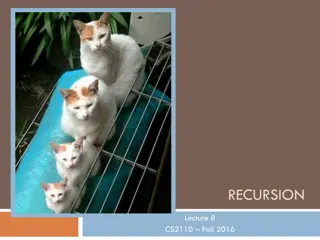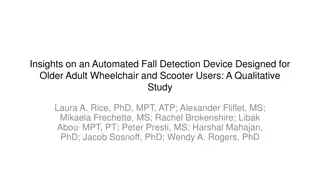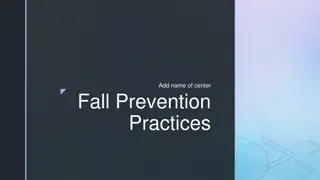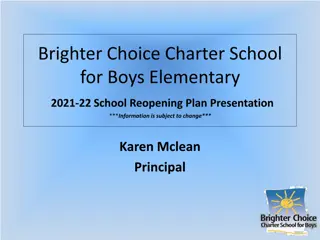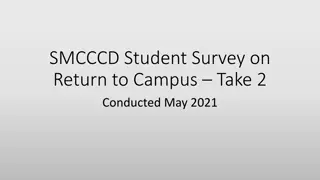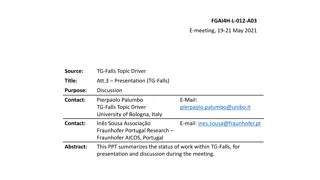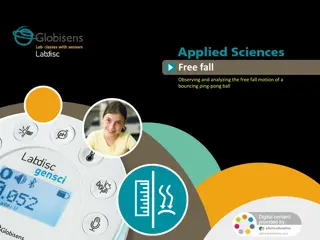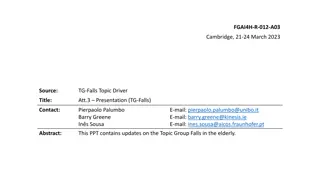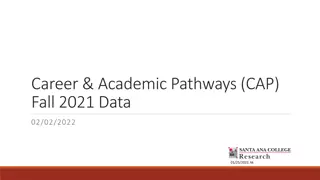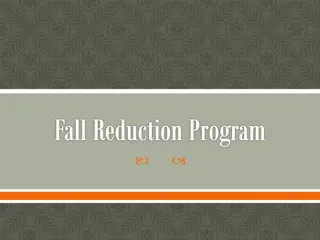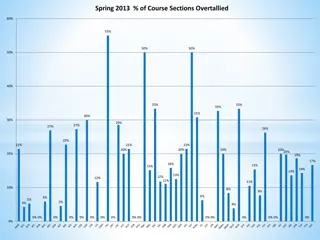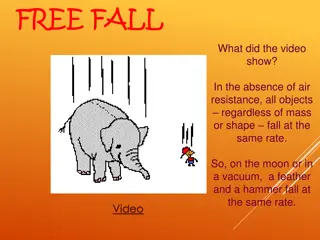
Understanding Classical Conditioning for Predictable Behavior
Explore the principles of classical conditioning, where predictability plays a crucial role in shaping behavior. Learn about Pavlov's experiments, reflex arcs, stimulus-response connections, and the significance of foundational terms like unconditioned stimulus and conditioned response. Delve into the learning process through examples and a learning curve.
Download Presentation

Please find below an Image/Link to download the presentation.
The content on the website is provided AS IS for your information and personal use only. It may not be sold, licensed, or shared on other websites without obtaining consent from the author. If you encounter any issues during the download, it is possible that the publisher has removed the file from their server.
You are allowed to download the files provided on this website for personal or commercial use, subject to the condition that they are used lawfully. All files are the property of their respective owners.
The content on the website is provided AS IS for your information and personal use only. It may not be sold, licensed, or shared on other websites without obtaining consent from the author.
E N D
Presentation Transcript
Classical Conditioning Predictability Matters!
Classical Conditioning Remember the Reflex Arc Reflex is elicited by a stimulus If that stimulus becomes predictive, organism will react to predictor Classical conditioning is learning to react to a predictive stimulus The predictive stimulus predicts the eliciting stimulus The eliciting stimulus elicits the reflex/response Learn to anticipate what elicits the reflex behavior respond ahead of time to the predictive stimulus
Pavlovs Contribution Ivan Pavlov Russian physiologist: Studied salivation 1901: discovered and wrote about classical conditioning Found that his dogs reacted to both his presence and the time of day for feeding/experimentation
Pavlovs Contribution Researched this: Measured amount of salivation during baseline: Present food to dogs Measure slobber Then added a predictive stimulus: a Bell (actually it was a buzzer!) Presented the Bell Food Measured slobber to see if dogs would begin to slobber to the bell
Labeled each part of these events: Unconditioned stimulus or US: The stimulus that automatically elicited the behavior (usually innate) E.g., the food elicited the slobber Conditioned stimulus or CS: The stimulus that predicts the US Is a learned (thus conditioned) stimulus Conditioned response or CR: The behavior that occurs to the CS Often very similar to the unconditioned response Occurs because the CS predicts the US Unconditioned response or UR The behavior that is automatically elicited Unlearned; often reflexive
Classical Conditioning Procedure CS US UR Bell Food CR Slobber with less Digestive enzymes Slobber
Classical Conditioning learning curve Strength or magnitude of 120 100 80 CR 60 40 20 0 1 4 7 10 13 16 19 22 25 28 31 34 37 40 43 46 49 52 55 58 61 64 Trials The CR does not just suddenly appear, rather it takes several trials or sessions to learn the connection between the CS and the US
Characteristics or Parameters of Classical Conditioning Relationship between UR and CR is critical CR MUST predict UR or no conditioning Sometimes the UR and CR are the same, or so it seems The UR and CR are not always identical! Often are similar, or in similar family of behavior
Characteristics or Parameters of Classical Conditioning The CR can be opposite of the UR: Compensatory response If predicted to go up, you respond by going down! See this with drugs: Morphine = lower BP, heart rate, feeling of cold, less pain CR to morphine= higher BP, HR, feel hot, more pain What could be predictive CS for morphine?
Why Opposite? Opponent Process Theory Based on research on classical conditioning of emotions Three common characteristics of emotional reactions: Are biphasic: primary reaction followed by after- reaction Primary reaction becomes weaker or habituates with repeated stimulations Weakening of primary reaction with repetition is accompanied by strengthening of after reaction
Solomon and Corbit, 1974 Homeostatic theory We like to be in balance, or at homeostasis If we have a primary reaction in one direction, need a second reaction in the opposite direction to bring back to homeostasis
Solomon and Corbit, 1974 Look at the two reactions: Primary process or a process: physiological system that is responsible for quality of initial emotional state Secondary or opponent process or b process: generates opposite emotional reaction to reduce primary process back to homeostasis One offsets the other Can apply to many physiological behaviors: eating, drinking, fear, etc.
Characteristics or Parameters of Classical Conditioning Strength of CR Strength gradually increases with trials E.g., slobber more after each CS-US pairing Monotonically increasing curve: increases in a single, climbing trend line Reaches an asymptote: some maximum amount of CR Why does the CR reach asymptote .why does it not increase infinitely?
Characteristics or Parameters of Classical Conditioning Extinction If stop CS-US pairing (CS nothing), then the CR will also fade away Again, must be unlearned, or habituated! Spontaneous recovery Sometimes, when conditions are similar to CS, the animal shows the CR Unpredictable; almost as if they suddenly remembered More likely to occur when animal is stressed, tired, hungry, etc.
Characteristics or Parameters of Classical Conditioning Relearning: Relearning is faster than original learning True if extinction occurred AND if just haven t had the experience for a while Important for drug, fear reactions!
Characteristics or Parameters of Classical Conditioning Generalization and discrimination: Generalization: CR will occur to stimuli that are similar to the original CS Discrimination: Can train the animal so the CR only occurs to very specific CSs
Characteristics or Parameters of Classical Conditioning Higher Order Conditioning: Chaining of CSs: e.g., CS3 CS2 CS1 US Respond most to CS1; least to CS3 Essentially is a chaining of CSs Each CS predicts the next Strongest learning (CR) to CS closest to US
Four procedures for classical conditioning Remember: CS should predict US or no CR; Predictability of CS is critical Four procedures: (Use the words to remember!) Simultaneous conditioning: CS and US presented at same time Delayed conditioning CS turns off; US immediately turns on US is delayed until end of CS
Four procedures for classical conditioning Four procedures: (Use the words to remember!) Trace conditioning A delay is inserted between CS and US Can test memory for pairing this way Backward conditioning US is presented BEFORE CS
US starts before CS ends US starts AFTER CS ends CS and US occur AT SAME TIME Is a break between CS and US US starts BEFORE CS
How study CC?: Experimental Paradigms Obviously, salivation can be one response Considered an appetitive response Can use other appetitive responses as well Fear conditioning Pair previously neutral stimulus with fear-eliciting stimulus (often shock) Usually get chain of fear responses Freezing Fleeing Fighting
Eyeblink conditioning CS paired with something that makes you blink (e.g., puff of air) Now CS elicits eyeblink Often do use air or spring on eyelid Like at eye doctor! Easy to use and reliable in humans and animals
Eyeblink conditioning Many animals have a nictitating membrane or 3rd eyelid: Rabbits, dogs, birds, cats, reptiles, fish ..even camels. Membrane keep the animals' eyes moist in the face of wind, sand or dirt without them having to blink. Easy to condition and measure!
Galvanic Skin Response, changes in respiration, Blood pressure, etc. Galvanic skin response: usually used for humans CS may be in most any modality CR = degree of sweating takes few trials in most instances
Galvanic Skin Response, changes in respiration, Blood pressure, etc. Respiration and blood pressure may change, too: Both for habituation and classical conditioning CS predictive and thus get change in respiration This is basis for lie detector tests
Sign Tracking Sign Tracking: Heart and Jenkins, 1974 The hot dog study: Companion dogs Octagon room: mounted near ceiling of each side was a light On 1 wall was light AND feeder Light basically circled around until the light above feeder lit, then a hot dog was delivered. Light moves around room, ends at feeder: What would be smartest position for dogs to take? Yes, sit at feeder and wait for light to get there That s not what happened: dogs followed the light or tracked the sign
6. 1 . 5. 2. 4. 3.
Sign Tracking Why track the sign ? Note: animal does not have to make this response (so is a CR) Animals learn to follow the best predictor of the CR
Sign Tracking Evolutionarily advantageous It is the sign that predicts event Not necessarily the location or path Thus: follow sign
Neural components? Pavlov suggested: Each environmental event corresponds to some point on cortex and deeper brain areas These are either excitatory or inhibitory effects Cortical mosaic: complex pattern of excitation/ inhibition
Neural components? Today we know this does occur and becomes a relatively stable configuration: Brain centers that repeatedly activated form temporary connections Arousal of one area results in activation of related area Excitation may spread as well (remember Sherrington) Neural networks
Applications of Classical conditioning It can be therapeutic!
Remember: Pairing one stimulus with another event Predictive relationship Typically pair a neutral stimulus to some event BUT: can take a non neutral stimulus and re-pair it with another event Change what that stimulus predicts! The longer the behavior has been established, the longer it takes to undo and redo!
Applications of Classical Conditioning Learning Emotional Reactions Learn that certain stimuli predict certain events Learn to anticipate upcoming emotion Show emotion to predictive stimulus E.g., learn to be afraid of tornado watches, not just the tornado: CStornado watch US tornado URfear CRfear
Little Albert Study Watson and Raynor (1920) Conditioned young child- Albert (about 18 mos old) CSwhite rat US loud noise URfear CRfear Then showed generalization to other objects with white fear (NOT Santa Claus!) Were going to impose extinction, but Albert moved away!
How undo a learned fear? Systematic desensitization Teach client to relax first Develop a hierarchy of fear-related stimuli and situations The substitute predictive CS and CR as introduce to fear hierarchy CSwhite rat US relaxing cue UR relax CRrelax
Also use in pain control Replace negative thoughts/cues with relaxation Meditation Yoga Lamaze Each uses a cue The rosary The mantra A fixation point
Other uses Can use it for Avoidance Pair noxious stimuli with behavior; make afraid Pair taste with nausea; won t eat or smoke that again! Sexual deviations: Classically conditioned: weird sex stimulus is paired with sexual arousal (e.g., young girls) So ..pair image of young girls with shock- not like anymore Problem: generalization: switch to little boys!
Other uses Can also use flooding: Flood with the CSs you are afraid of Massed trials: quickly learn that CSs are now meaningless Problems with this????
Other uses Drug abuse: Contextual cues are extremely strong Predictive cues = friends, environment, the drug and setting itself If take these cues away- can overdose If cues return: cravings come back Important to change friends and neighborhood when overcoming addiction
Other uses Advertising Pair your product with a nice feeling Why do we use puppies and kitties to sell toilet paper? Relationship of CS to US? CS = nice stimulus US is the product Good feelings increase buying behavior Disney uses smells as cues Food smells around bakery Water smells around water ride stores
Behavior Adjustment Therapy What is Sensitivity to a stimulus? Organism is quick to detect or respond to slight changes, signals or influences, Accompanied by conditioned response of having acute mental or emotional sensitivity. Often observed with dogs: Dogs with severe behavior problems (aggression, fear, separation anxiety) are often overly and abnormally sensitive to a stimulus (person, dog, noise). Over reactivity dog reacts inappropriately with excessive fear or aggression toward the stimulus in question.
Behavior Adjustment Therapy Desensitization Means of lessening the sensitivity to a CS until the response is small in proportion to the initial response, or until there is no response at all. Desensitization works GRADUALLY: slowly exposes the dog to low and controlled levels of the stimulus that he is aggressive to or fearful of Replace reactivity and aggressive behavior with calmness and appropriate social behavior
Counter Conditioning Obviously: form of classical conditioning But: Must UNDO a CS-US relationship and reestablish a new CR Introduce CS-new US pairings Have learned Bad guy scary things happen Bad guy high value treat Over time the bad guy elicits cravings for treats, not fear Very time consuming: Longer the behavior has been established, longer to undo a great deal of repetition and trust from the dog. Great deal of patience and repetition for trainer.
Why do dogs (and others) need desensitization? Some have had traumatic experiences. Distressing experience during the puppy fear stage Experienced Dog Fights or abuse Genetic predisposition to oversensitivity or phobias Lack of socialization during the crucial puppy fear stages.
Always use counter conditioning? DO NOT USE If cannot control levels of anxiety/fear (e.g., in severe cases) May need to artificially reduce anxiety and fear A veterinarian/physician can diagnose and prescribe medication that can help with the process of helping the dog to desensitize. Really needs to be a combination of training with the drug; drug alone will not work.
Always use counter conditioning? Not inhumane to give dogs or humans a drug as a co-treatment When humans have a severe phobic or anxiety disorder, we would typically medicate. Yet, dog owners often are I adamantly against medication Need to use what ever helps dogs, just like we would with humans



